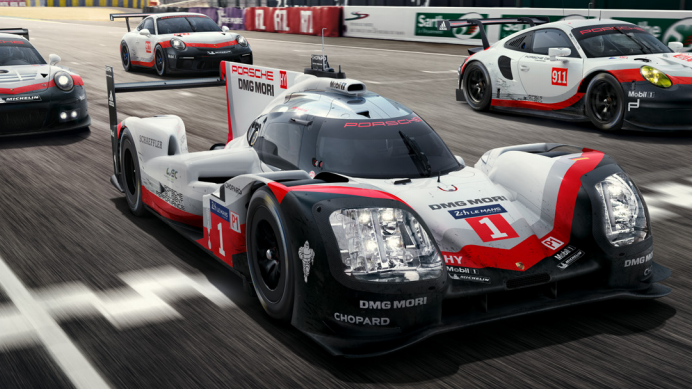Right now, Tesla Motors is already shipping electric cars with very advanced autonomous drive software. Soon Apple will also have an electric car well-equipped, primarily purposed for safe, automatic commutes. These technological developments could potentially save millions of lives from human error accidents. But with the imminent arrival of autonomous vehicles, many people have started worrying about the safety and ethics of this new technology, especially when an issue arises to do with choice. In this piece, we’ll delve into the issue of the “Trolley Problem” and how AVs will deal with this and whether all manufacturers have the same stance.
Images
The Porsche 919 Hybrid Set to Conquer the 24 Hour Le Mans
Cars entered into the Le Mans P1 event have hybrid systems that use regenerative braking to capture energy when the car slows down. One of which is the Porsche 919 Hybrid. In 2017, Porsche is returning to the top class to defend its title as FIA WEC World Champion from 2015 and 2016 with the 919 Hybrid.
Porsche’s fourth-generation 919 Hybrid is powered by a turbocharged four-cylinder, two-liter petrol engine delivering almost 500 hp that drives the rear axle. Its ally is an additional electric motor delivering more than 400 hp to the front axle. The latter is fed by two energy recovery systems. Converted braking and exhaust energy is temporarily stored in a liquid cooled lithium-ion battery. Porsche is gaining key insights for series production have been obtained from the LMP1 prototype project: examples include the cooling for the battery and electric motor, the connection
technology for extreme high voltage as well as the battery management and the systems’ design.
With the 24 Hours of Le Mans around the corner, we thought we’d delve into the event and check out the cars in detail and see how they’re made in order to deal with this grueling race. We also find out how Guido Van Der Garde prepares for Le Mans 24 Hours and the difference between Le Man and Formula 1. We’ve also thrown in a few tips if you’re going to attempt to watch the full 24 Hours without falling asleep.
CarbonCounter.com has a great app where you can compare prices and carbon emissions
You’ve gotta check this out! The folks over at MIT have crunched the numbers and found overwhelming support that not only do electric vehicles emit less pollution over their lifespans, but many are also cheaper after tax rebates. The results are surprisingly obvious. If you need help understanding, the points to the left on the chart are cars that cost less (initial price, maintenance, and fuel), and points that are lower on the chart have less lifecycle emissions (production, tailpipe, electricity generation, ett.). So don’t worry, these MIT guys have factored in all of the assumptions to make your choice easier. You can also customize the app by changing variables such as the cost and sources of electricity and gasoline prices. This is a fascinating app and I hope they keep it updated for future makes and models. Electric vehicles are orangish yellow.
Carboncounter was created by Marco Miotti, Geoffrey J. Supran, and Jessika E. Trancik at the MIT Trancik Lab, based on reference [1], and programmed by Marco Miotti using AngularJS and D3.
Costs are given in 2014 USD. Vehicle specifications were obtained from manufacturer websites and cars.com, and are based on 2014 models (except for the Toyota Mirai, Chevrolet Bolt, and Tesla Model 3). Emissions were calculated based on the Greenhouse Gases, Regulated Emissions, and Energy Use in Transportation (GREET) model, developed by Argonne National Laboratory. Fuel economies reflect the official EPA ratings, which are based on a standardized test procedure specified by U.S. federal law.
Details on the calculation of costs, greenhouse gas emissions, and emission targets can be found in the Supporting Information of reference [1].
[1]: M. Miotti, G.J. Supran, E.J. Kim, J.E. Trancik, Environmental Science & Technology, 2016.



